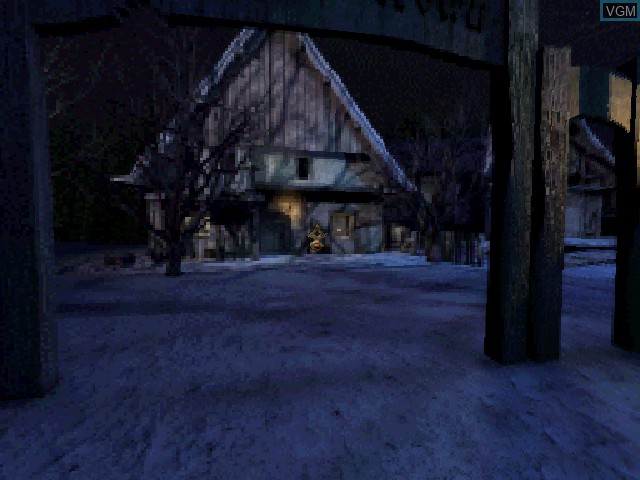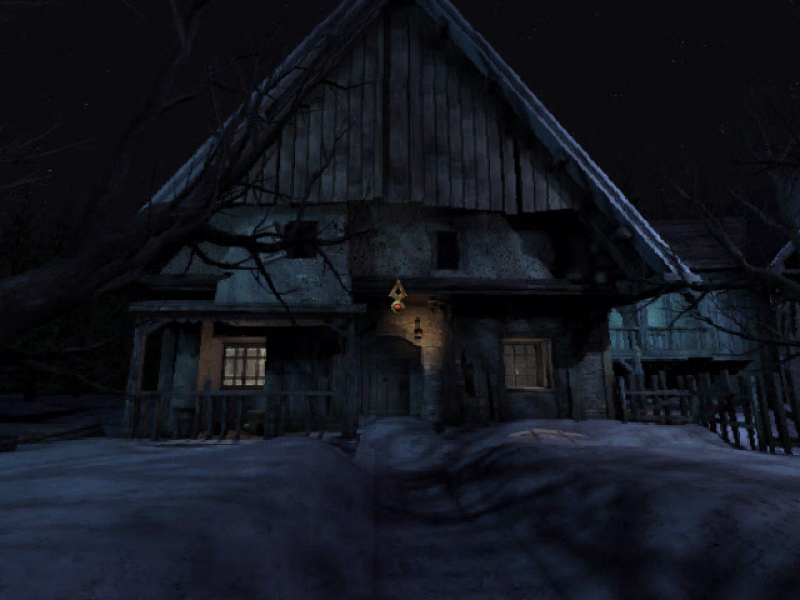



Of special note are the character models that feature in the game’s cinematics being confronted with the homely innkeeper’s pallid, warty face, fine red capillaries showing, early in the game lent the character some visual personality. Nothing spells “ominous” quite like seeing a bird nailed to the top of a graveyard cross, or opening a subterranean dungeon door only to see a hooded shape enshrouded in shadow directly in front of you. The game’s visuals won’t take your breath away, but they certainly convey the proper foreboding mood. Jonathan’s harrowing journey is split into three main sections of exploration: the nighttime forests surrounding an isolated Romanian inn, an abandoned underground mine system, and Dracula’s forbidding castle itself. This forces you to spend time memorizing the layout of where the on-screen hotspots are in each area to expedite navigation. The panoramic camera lets you rotate in a complete 360° view at each stop, but actually traveling often becomes a bit annoying – I was repeatedly forced to maneuver through several screens within a room to get to its exit, even though I could clearly see the door from my starting point. The player moves through static scenes to explore both indoor and outdoor locales, interacting with hotspots and clicking navigation points to advance a few steps in a given direction. Although the plot setup is rather hackneyed (copied almost verbatim from the original tale), it seems appropriate enough given the franchise the game is based on.ĭracula: Resurrection uses a first-person view to handle navigation. If this sounds a tad familiar, that’s because it is. Enter the knight in shining armor, Jonathan Harker, who will stop at nothing to retrieve his missing bride. His first order of business is to abduct Mina Harker to his remote Transylvanian castle lair by means of the link the two share, due to Mina having previously been bitten. The problem of continuing a story in which the title character has already been killed off is solved with little aplomb or ingenuity: Six months after having been slain in the mountains of Carpathia, Dracula inexplicably rises from the (un)dead. The game’s straightforward approach to puzzle solving and inventory management made it clock in around four hours for me – and that’s counting an entire hour stuck on a single puzzle late in the game! It does come up lacking in length, however. But no list of villains, no matter how much it reads like a Who’s Who of detestable dastardliness, would be complete without the grandfather of them all: the Prince of Darkness, Vlad the Impaler himself – Dracula.Īnd what better time to revisit the roots of the long-running point-and-click horror series? With a two-part sequel just released, let’s travel back to the year 2000, when it all began… or rather, when Dracula: Resurrection picked up where Bram Stoker’s original novel left off.Īs it turns out, Resurrection is more of a well-presented, fun and atmospheric diversion than an epic trek into the depths of hell, but there are some noteworthy positives along the way. In fact, most modern games today would be hard to imagine if the stalwart protagonist didn’t have a vile opposing foil to play off of.


 0 kommentar(er)
0 kommentar(er)
